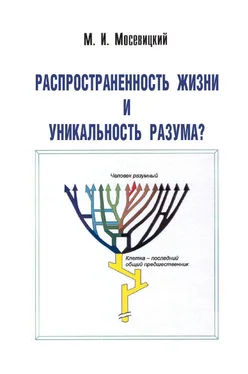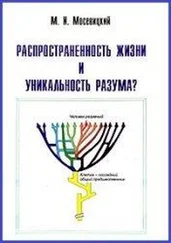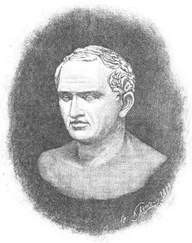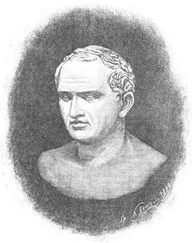Ohta T. (1987). Very slightly deleterious mutations and the molecular clock. J. Mol. Evol., 26, 1―6.
Olivieri A. et al. (2007) The mtDNA legacy of the Levantine early Upper Palaeolithic in Africa. Science, 314, 1767―1770.
Olsen G. J. and W―se C. R. (1997) Arcaeal genomics: an overview. Cell, 89, 991―994.
Olsen P. E. (2002) Ascent of dinosaurs linked to an iridium anomaly at the Triassic-Jurassic boundary. Science, 296, 1305―1307.
Olson M. (1999) When less is more: Gene loss as an engine of evolutionary change. Am. J. Hum. Genet., 64, 18―23.
Oro J. (1961) Mechanizm of synthesis of adenine from hydrogen cyanide under possible primitive earth conditions. Nature, 191, 1193―1194.
Oro J. and Guidry C. L. (1961) Direct synthesis of polypeptides. I. Polycondensation of glycine in aqueous ammonia. Arch. Biochem. Biophys., 93, 166―171.
Oro J. and Kamat S. S. (1961) Amino acid synthesis from hydrogen cyanide under possible primitive earth conditions. Nature, 190, 442―443.
Oro J. and Kimball A. P. (1961) Synthesis of purines under possible primitive earth conditions. I. Adenine from hydrogen cyanide. Arch. Biochem. Biophys., 94, 217―227.
Oro J. et al. (1990) The origin and early evolution of life on Earth. Annu. Rev. Earth.
Planet Sci., 18, 317―356.
Ouzounis C. A. et al. (2006) A minimal estimate for the gene content of the last universal common ancestor-exobiology from a terrestrial perspective. Res. Microbiol., 157, 57―68.
Ovchinnikov I. V. et al. (2000) Molecular analysis of Neanderthal DNA from the northern Caucasus. Nature, 404, 490―493.
Pace N. R. (1991) Origin of life ― facing up to the physical setting. Cell, 65, 531―533.
Pakendorf B. and Stoneking M. (2005) Mitochondrial DNA and human evolution. Annu. Rev. Genomics Hum. Genet., 6, 165―183.
Palanichamy M. G. et al. (2004) Phylogeny of mitochondrial DNA macrohaplogroup N in India, based on complete sequencing: implications for the peopling of South Asia. Am. J. Hum. Genet., 75, 966―978.
Paris F. et al. (2000) The effects of the final stages of the Late Ordovician glaciation on marine palynomorphs (chitinozoans, acritarchs, leiospheres) in well Nl-2 (NE Algerian Sahara). Rev. Palaeobot. Palynol., 113, 87―104.
Passarino G. et al. (1998) Different genetic components in the Ethiopian population, identified by mtDNA and Y-chromosome polymorphisms. Am. J. Hum. Genet., 62, 420―34.
Paul N. and Joyce G. F. (2004) Minimal self-replicating systems. Curr. Opin. Chem. Biol., 8, 634―639.
Pavlov A. A. et al. (2000) Greenhouse warming by CH4 in the atmosphere of early Earth. J. Geophys. Res., 105, 11981―11990.
Pavlov P. et al. (2001) Human presence in the European Arctic nearly 40,000 years ago. Nature, 413, 64―67.
Payton A. et al. (2003) Cathepsin D exon 2 polymorphism associated with general intelligence in a healthy older population. Mol. Psych., 8, 14―18.
Penny D. (1988) What was the first living cell? Nature, 331, 111―112.
Penny D. (1995) Improved analyses of human mtDNA sequences support a recent African origin for Homo sapiens. Mol. Biol. Evol., 12, 863―82.
Perry C. A. and Hsu K. J. (2000) Geophysical, archaeological, and historical evidence support a solar-output model for climate change, Proc. Natl. Acad. Sci. USA, 97, 12433― 12438.
Pflug H. D. (1984) Early geological record and the origin of life. Naturwissenschaften, 71, 63―68.
Pienta K. J. and Coffey D. S. (1984) A structural analysis of the role of the nuclear matrix and DNA loops in the organization of the nucleus and chromosome. J. Cell. Sci. Suppl., 1, 123―135.
Pierazzo E. et al. (2003) Chicxulub and climate: radiative perturbations of impact-produced S-bearing gases. Astrobiology, 3, 99―118.
Pierrehumbert R. T. (2004) High levels of atmospheric carbon dioxide necessary for the termination of global glaciation. Nature, 429, 646―6649.
Pitulko V. V. et al. (2004) The Yana RHS site: humans in the Arctic before the last glacial maximum. Science, 303, 52―56.
Pizzarello S. (2004) Chemical evolution and meteorites: an update. Orig. Life Evol., Biosph., 34, 25―34.
Pizzarello S. and Cronin J. R. (2004) Non-racemic amino acids in the Murray and Murchison meteorites. Geochim. Cosmochim. Acta, 64, 329―338.
Plagnol V. and Wall J. D. (2006) Possible ancestral structure in human populations. PLoS Genet., 2, e105.
Polak P. and Domany E. (2006) Alu elements contain many binding sites for transcription factors and may play a role in regulation of developmental processes. BMC Genomics,7, 133 (15 pages).
Pollard K. S. et al. (2006 a) An RNA gene expressed during cortical development evolved rapidly in humans. Nature, 443, 167―172.
Pollard K. S. et al. (2006b) Forces shaping the fastest evolving regions in the human genome. PLoS Genet., 2, 1599―1611.
Ponce de Leon M. S. and Zollikofer C. P. (2001) Neanderthal cranial ontogeny and its implications for late hominid diversity. Nature, 412, 534―538.
Ponjavic J. et al. (2007) Functionality or transcriptional noise? Evidence for selection within long noncoding RNAs. Genome Res., 17, 556―565.
Ponting C. P. and Lunter G. (2006) Signatures of adaptive evolution within human non-coding sequence. Hum. Mol. Genet., 15, Spec № 2, R170―175.
Poole A. et al. (1999) Early evolution: prokaryotes, the new kids on the block. Bi―ssais, 21, 880―889.
Poole A. M. and Logan D. T. (2005) Modern mRNA proofreading and repair: clues that the last universal common ancestor possessed an RNA genome? Mol. Biol. Evol., 22, 1444―1455.
Pope K. O. et al. (1994) Impact winter and the Cretaceous/Tertiary extinctions: results of a Chicxulub asteroid impact model. Earth Planet Sci. Lett., 128, 719―725.
Pope K. O. et al. (1997a) Surface expression of the Chicxulub crater. Geology, 25, 567―598.
Pope K. O. et al. (1997b) Energy, volatile production, and climatic effects of the Chicxulub Cretaneous/Tertiary impact. J. Geophys. Res., 102, 21645―21664.
Poreda R. J. and Becker L. (2003) Fullerenes and interplanetary dust at the Permian-Triassic boundary. Astrobiology, 3, 75―90.
Price D. L. et al. (1998) Alzheimer disease ― when and why? Nature Gen., 19, 314―316.
Pu L. et al. (1977) Preliminary study on the age of Yuanmou man by palaeomagnetic technique. Sci. Sin., 20, 645―664.
Quintana-Murci L. et al. (1999) Genetic evidence of an early exit of Homo sapiens sapiens from Africa through eastern Africa. Nat. Genet., 23, 437―441.
Rabinowitz D. et al. (2000) A reduced estimate of the number of kilometre-sized near-Earth asteroids. Nature, 403, 165―166.
Ramakrishnan U. et al. (2005) Detecting past population bottlenecks using temporal genetic data. Mol. Ecol., 14, 2915―2922.
Rasmussen B. (2000) Filamentous microfossils in a 3,235-million-year-old volcanogenic massive sulphide deposit. Nature, 405, 676―679.
Rasmussen S. et al. (2003) Bridging nonliving and living matter. Artif. Life, 9, 269―316.
Rasmussen S. et al. (2004) Transitions from nonliving to living matter. Science, 303, 963―965.
Raulin F. and Greenberg J. M. (1997) From the interstellar clouds, through the inner to the outer solar system: a universally distributed complex organic chemistry. Preface. Adv. Space Res., 19, 975―978.
Ravizza G. et al. (2003) Chemostratigraphic evidence of Deccan volcanism from the marine osmium isotope record. Science, 302, 1392―1395.
Ray N. et al. (2005) Recovering the geographic origin of early modern humans by realistic and spatially explicit stimulation. Genome Res. 15, 1161―1167.
Razin S. V. et al. (1985) Low ionic strength extraction of nuclease-treated nuclei destroys the attachment of transcriptionally active DNA to the nuclear skeleton. Nucl. Acids Res., 13, 7427―7444.
Читать дальше
Конец ознакомительного отрывка
Купить книгу










